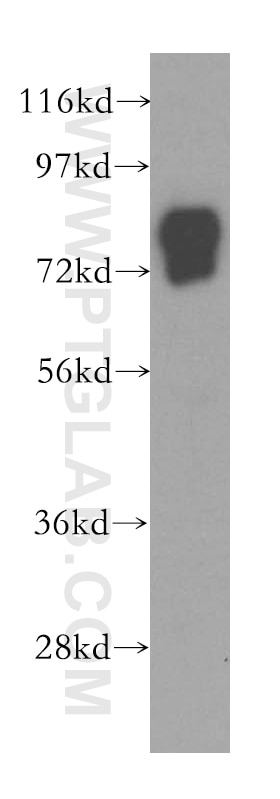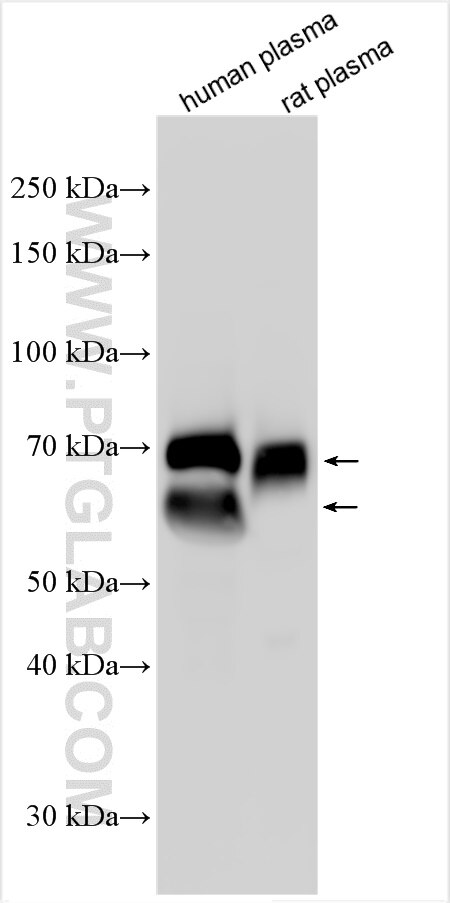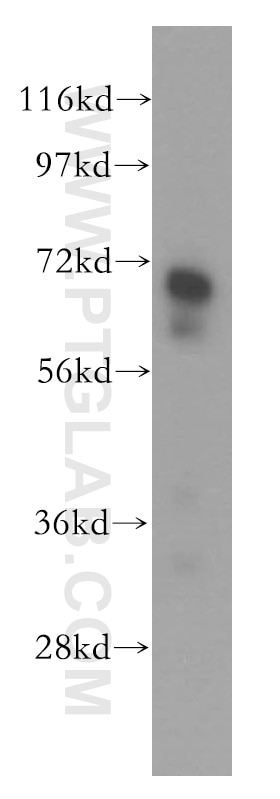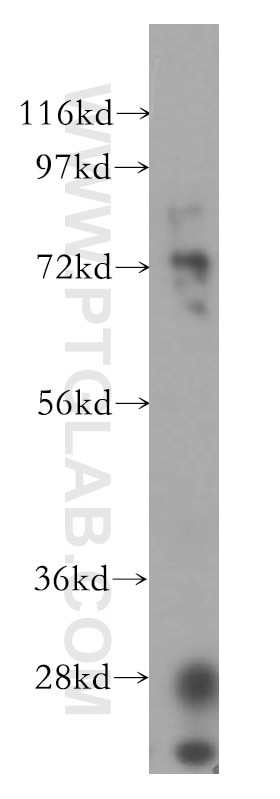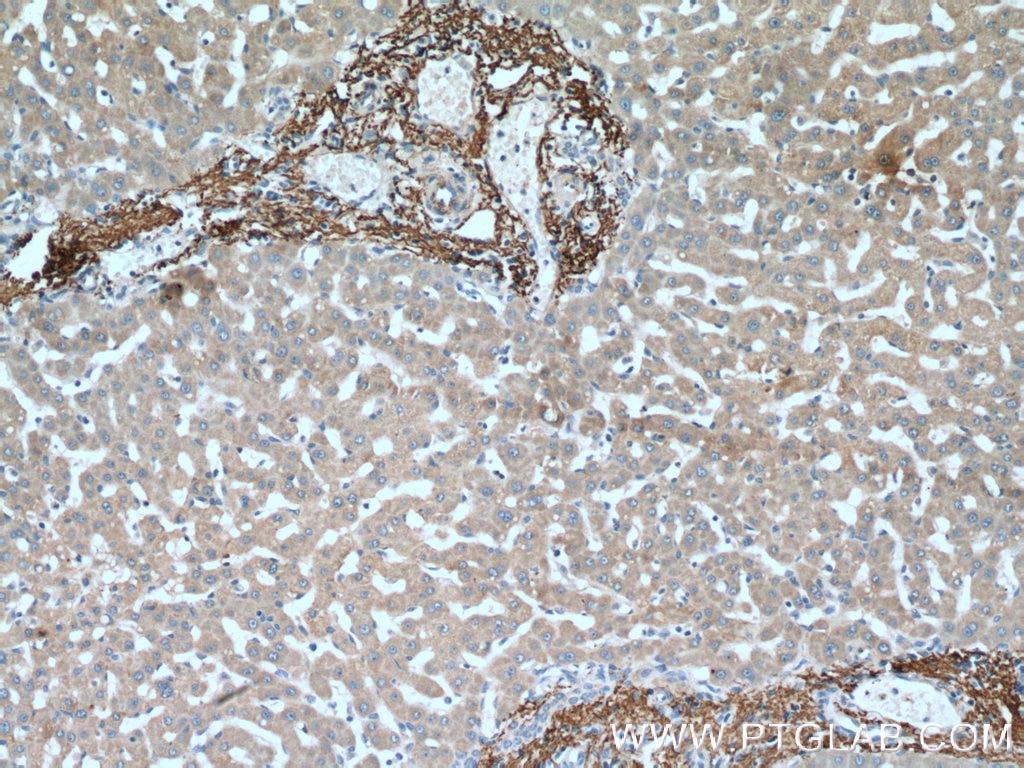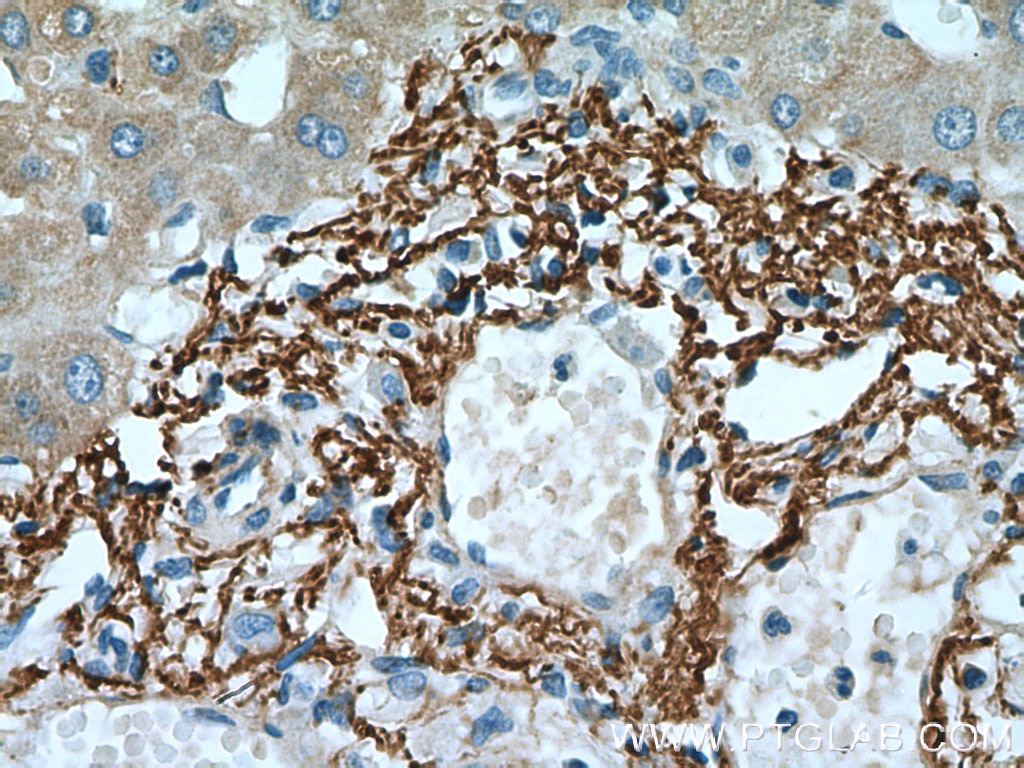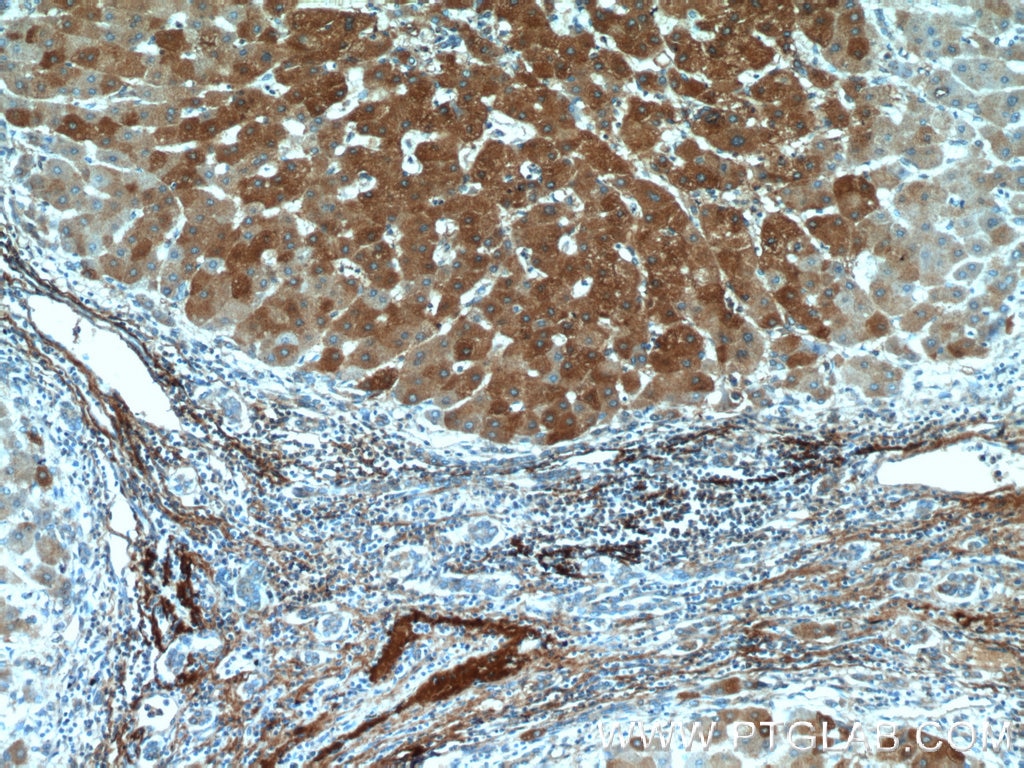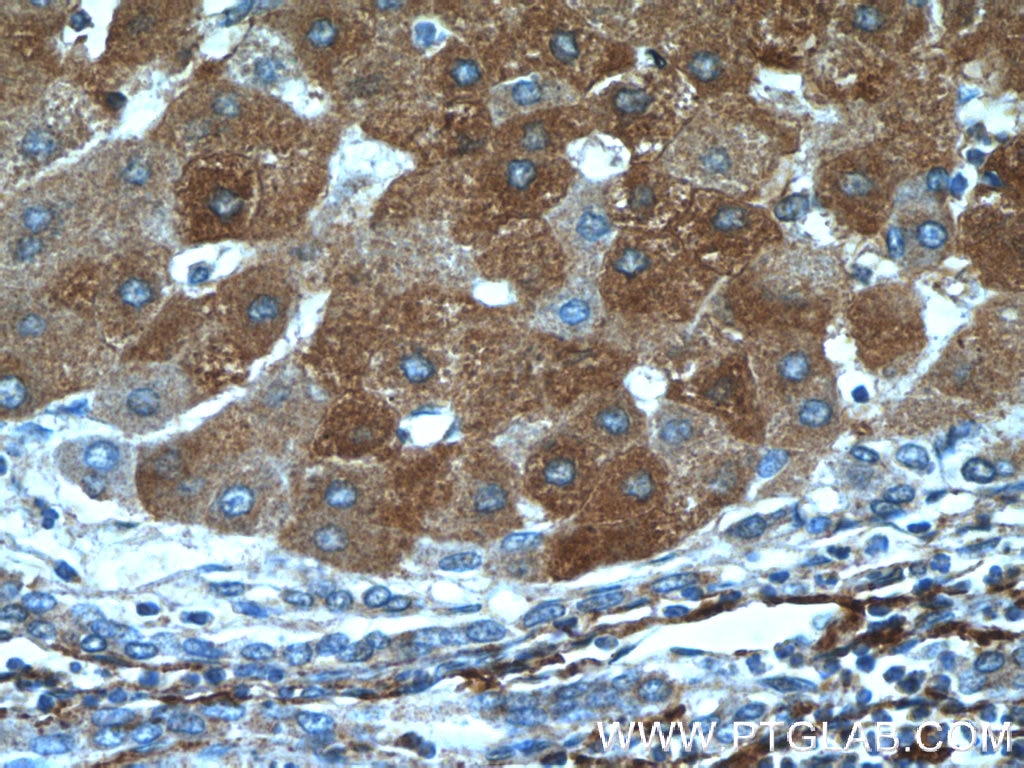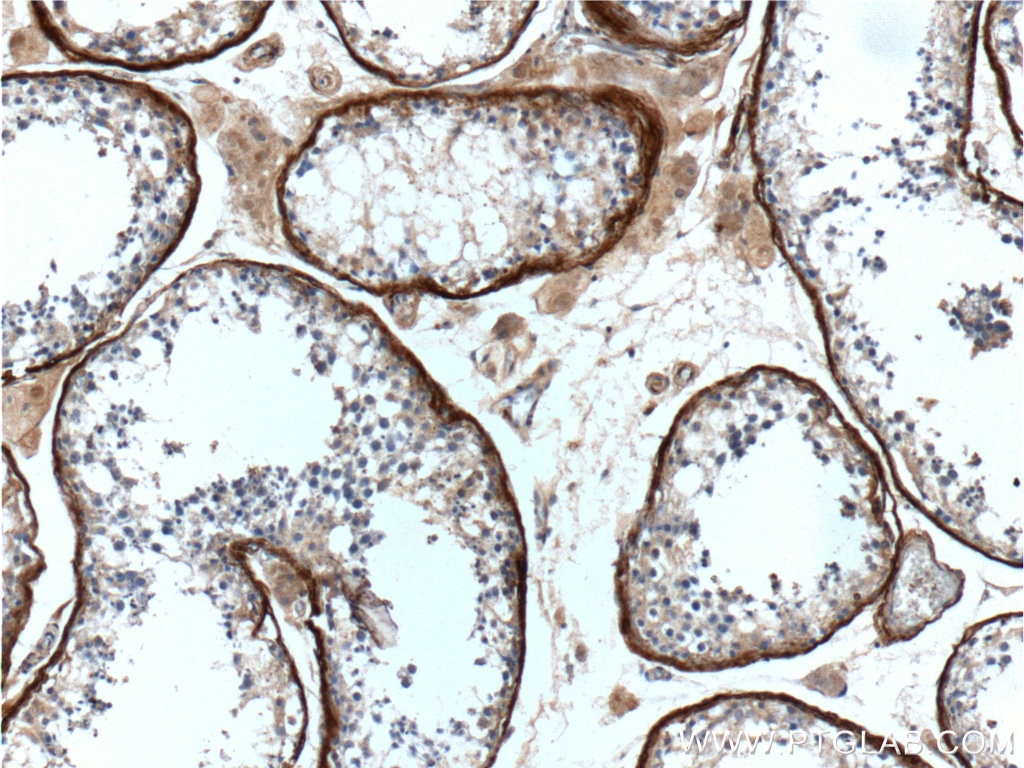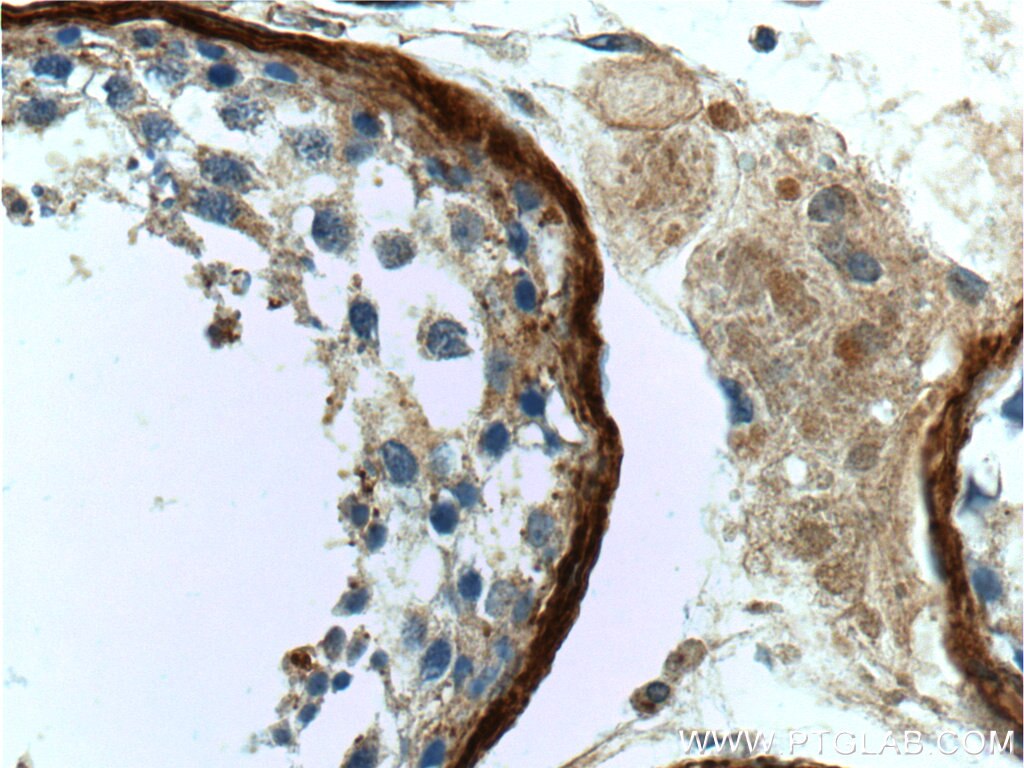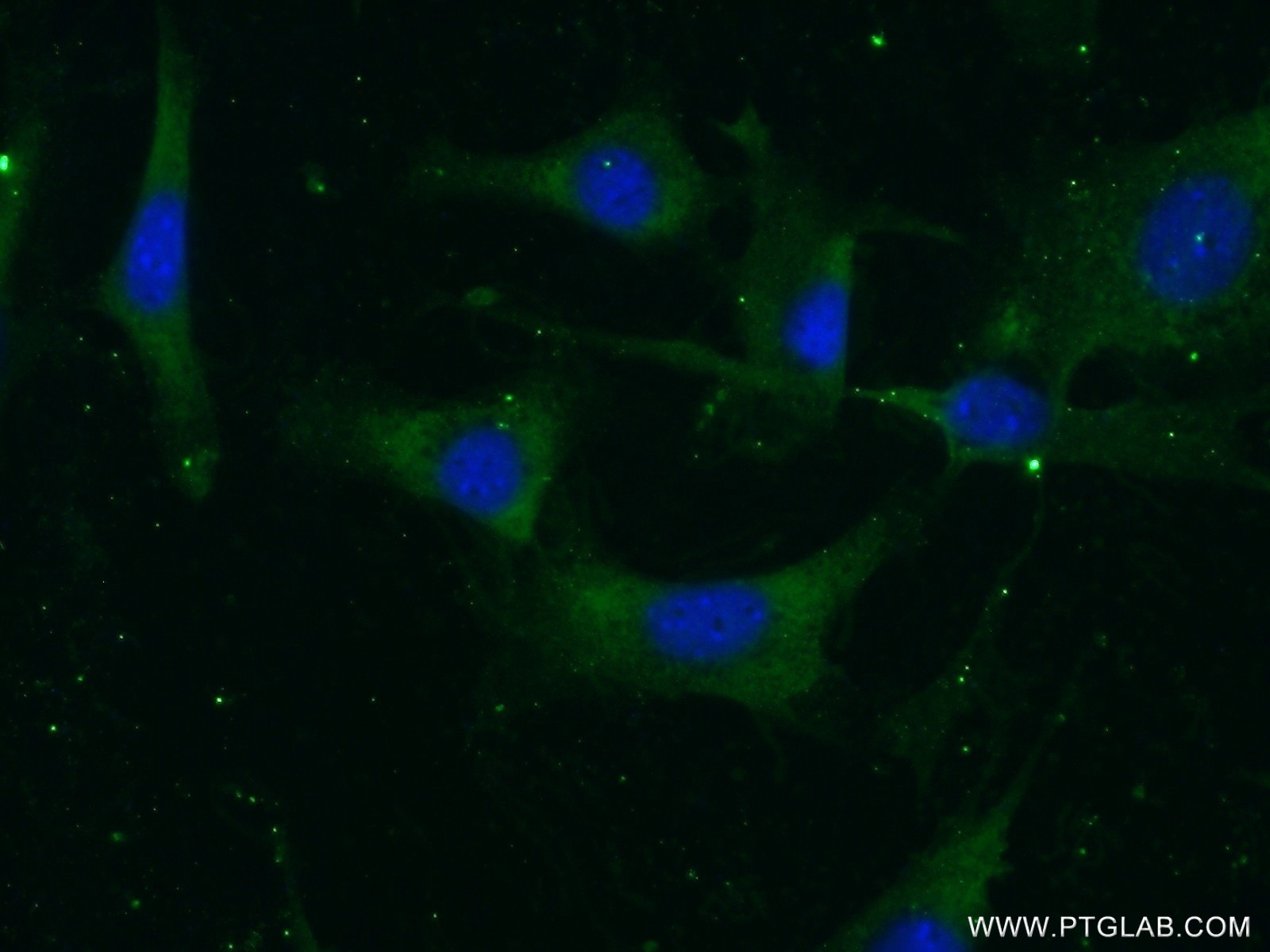Vitronectin/S-protein Polyklonaler Antikörper
Vitronectin/S-protein Polyklonal Antikörper für WB, IHC, IF/ICC, ELISA
Wirt / Isotyp
Kaninchen / IgG
Getestete Reaktivität
human, Maus, Ratte und mehr (2)
Anwendung
WB, IHC, IF/ICC, ELISA
Konjugation
Unkonjugiert
Kat-Nr. : 15833-1-AP
Synonyme
Geprüfte Anwendungen
| Erfolgreiche Detektion in WB | rat plasma, humanes Hodengewebe, NIH/3T3-Zellen |
| Erfolgreiche Detektion in IHC | humanes Lebergewebe, humanes Leberzirrhosegewebe, humanes Hodengewebe Hinweis: Antigendemaskierung mit TE-Puffer pH 9,0 empfohlen. (*) Wahlweise kann die Antigendemaskierung auch mit Citratpuffer pH 6,0 erfolgen. |
| Erfolgreiche Detektion in IF/ICC | NIH/3T3-Zellen |
Empfohlene Verdünnung
| Anwendung | Verdünnung |
|---|---|
| Western Blot (WB) | WB : 1:5000-1:50000 |
| Immunhistochemie (IHC) | IHC : 1:50-1:500 |
| Immunfluoreszenz (IF)/ICC | IF/ICC : 1:50-1:500 |
| It is recommended that this reagent should be titrated in each testing system to obtain optimal results. | |
| Sample-dependent, check data in validation data gallery | |
Veröffentlichte Anwendungen
| WB | See 15 publications below |
| IHC | See 4 publications below |
| IF | See 7 publications below |
Produktinformation
15833-1-AP bindet in WB, IHC, IF/ICC, ELISA Vitronectin/S-protein und zeigt Reaktivität mit human, Maus, Ratten
| Getestete Reaktivität | human, Maus, Ratte |
| In Publikationen genannte Reaktivität | human, Hausschwein, Maus, Ratte, Plasmodium falciparum |
| Wirt / Isotyp | Kaninchen / IgG |
| Klonalität | Polyklonal |
| Typ | Antikörper |
| Immunogen | Vitronectin/S-protein fusion protein Ag8443 |
| Vollständiger Name | vitronectin |
| Berechnetes Molekulargewicht | 478 aa, 54 kDa |
| Beobachtetes Molekulargewicht | 70-75 kDa, 65 kDa, |
| GenBank-Zugangsnummer | BC005046 |
| Gene symbol | VTN |
| Gene ID (NCBI) | 7448 |
| Konjugation | Unkonjugiert |
| Form | Liquid |
| Reinigungsmethode | Antigen-Affinitätsreinigung |
| Lagerungspuffer | PBS with 0.02% sodium azide and 50% glycerol |
| Lagerungsbedingungen | Bei -20°C lagern. Nach dem Versand ein Jahr lang stabil Aliquotieren ist bei -20oC Lagerung nicht notwendig. 20ul Größen enthalten 0,1% BSA. |
Hintergrundinformationen
Vitronectin is a 75-kDa glycoprotein present in blood and in the extracellular matrix (PMID: 10399314). Vitronectin is a multifunctional glycoprotein that mediates cell-to-substrate adhesion, inhibits the cytolytic action of the terminal complement cascade in vitro and binds to several serine protease inhibitors of the serpin family (PMID: 1372588).
Protokolle
| PRODUKTSPEZIFISCHE PROTOKOLLE | |
|---|---|
| WB protocol for Vitronectin/S-protein antibody 15833-1-AP | Protokoll herunterladen |
| IHC protocol for Vitronectin/S-protein antibody 15833-1-AP | Protokoll herunterladenl |
| IF protocol for Vitronectin/S-protein antibody 15833-1-AP | Protokoll herunterladen |
| STANDARD-PROTOKOLLE | |
|---|---|
| Klicken Sie hier, um unsere Standardprotokolle anzuzeigen |
Publikationen
| Species | Application | Title |
|---|---|---|
Cell Stem Cell Region-specific cellular and molecular basis of liver regeneration after acute pericentral injury | ||
Brain Pathol Reconstituting neurovascular unit with primary neural stem cells and brain microvascular endothelial cells in three-dimensional matrix. | ||
Sci Rep Molecular Camouflage of Plasmodium falciparum Merozoites by Binding of Host Vitronectin to P47 Fragment of SERA5. | ||
J Cell Mol Med Induction of migration of periodontal ligament cells by selective regulation of integrin subunits. | ||
Langmuir Characterization of Initial Cell Adhesion on Charged Polymer Substrates in Serum-Containing and Serum-Free Media. | ||
Proteomics SILAC-based Quantitative Proteomic Analysis of Secretome between Activated and Reverted Hepatic Stellate Cells. |
Rezensionen
The reviews below have been submitted by verified Proteintech customers who received an incentive for providing their feedback.
FH Jingwen (Verified Customer) (01-28-2020) | It worked well when I performed the western blot in cancer samples.
|
